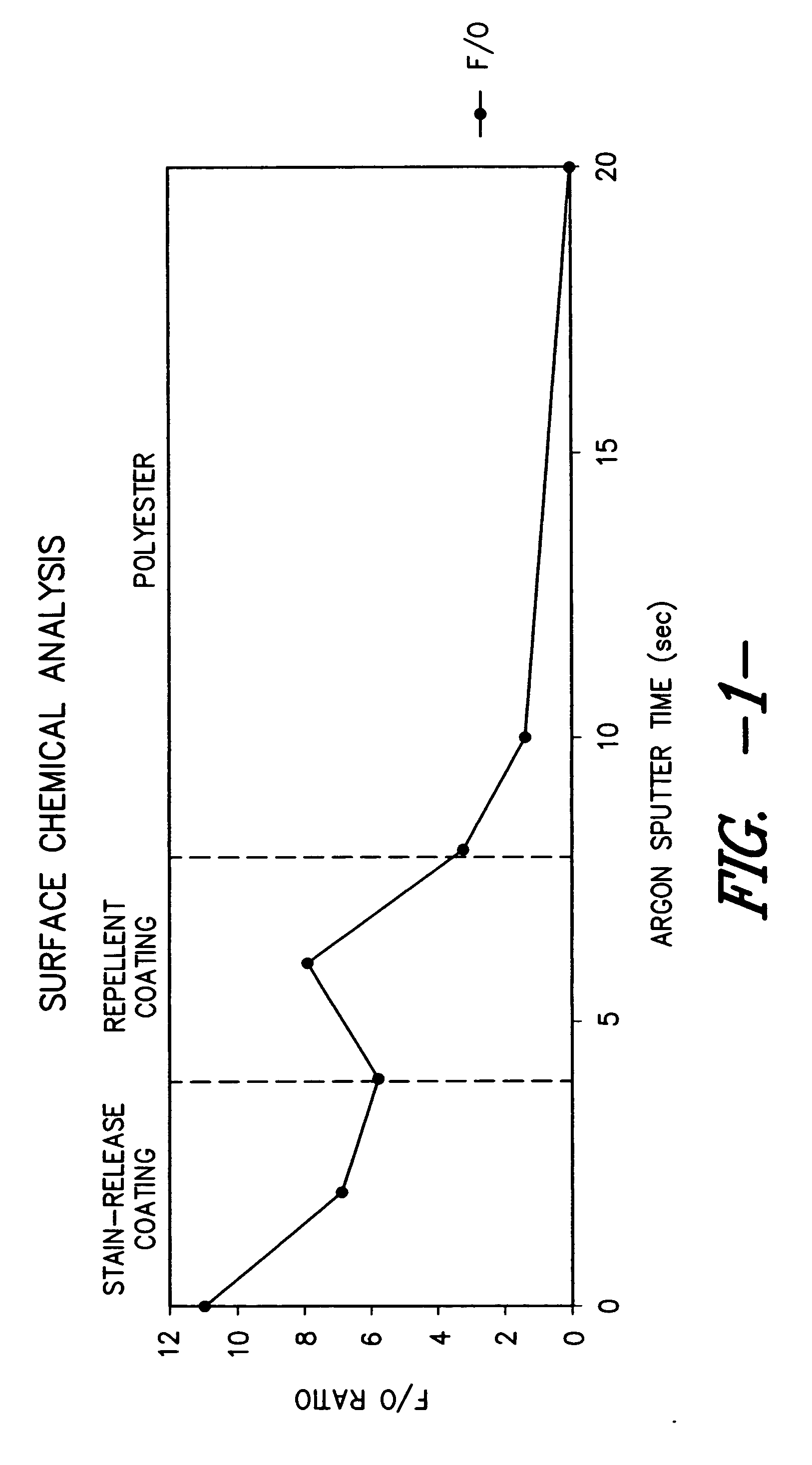Textile substrates having layered finish structure for improving liquid repellency and stain release
a technology of texture substrates and finish structures, applied in the field of texture substrates, can solve the problems of inability to achieve simultaneous and wash-or-abrasion durable characteristics, inability to meet the requirements of long-term use of target substrates, and inability to achieve wash-durability. long-term utilization of target substrates
- Summary
- Abstract
- Description
- Claims
- Application Information
AI Technical Summary
Benefits of technology
Problems solved by technology
Method used
Image
Examples
example 1
[0171] A woven 100% polyester fabric (approximately 8 oz / yd2) was obtained from Milliken & Company of Spartanburg, S.C. The fabric was woven, using 2 ply 150 filament textured polyester yarns in each the warp and filling, to provide a fabric having approximately 60 ends per inch and 45 pick per inch.
[0172] The woven fabric was treated according to the multi-layer pad / pad application procedure described previously. The first chemical bath contained the following components: [0173] 2% Repearl® F-7105, a fluorinated water and oil repellent agent available from Mitsubishi Corp.; and [0174] 0.5% Milliguard® MRX, an isocyanate-containing crosslinking agent available from Milliken & Company.
[0175] The second chemical bath contained the following components: [0176] 2% Repearl® F-7105; [0177] 1% Unidyne® TG-993, a stain release fluorochemical available from Daikin Corp; [0178] 0.5% Milliguard® MRX; [0179] 0.2% Aerosil® R7200, hydrophobic fumed silica particles available from Degussa Corpor...
example 2
[0182] Example 1 was repeated except that the 100% woven polyester fabric was replaced by a polyester double needle bar knit fabric (approximately 12 oz / yd2) obtained from Milliken & Company.
example 3
[0183] Example 1 was repeated except that the second chemical bath contained the following components: [0184] 0.02% Silquest® A-187, a silane based coupling agent available from GE; [0185] 0.2% Sipernat® 500LS, hydrophilic precipated silica particles available from Degussa Corporation of Germany; [0186] 2% Repearl® F-7105; [0187] 1% Unidyne® TG-993; [0188] 0.5% Milliguard® MRX; and [0189] 0.5% AlphaSan® RC5000.
PUM
| Property | Measurement | Unit |
|---|---|---|
| particle sizes | aaaaa | aaaaa |
| particle sizes | aaaaa | aaaaa |
| particle sizes | aaaaa | aaaaa |
Abstract
Description
Claims
Application Information
 Login to View More
Login to View More - R&D
- Intellectual Property
- Life Sciences
- Materials
- Tech Scout
- Unparalleled Data Quality
- Higher Quality Content
- 60% Fewer Hallucinations
Browse by: Latest US Patents, China's latest patents, Technical Efficacy Thesaurus, Application Domain, Technology Topic, Popular Technical Reports.
© 2025 PatSnap. All rights reserved.Legal|Privacy policy|Modern Slavery Act Transparency Statement|Sitemap|About US| Contact US: help@patsnap.com

